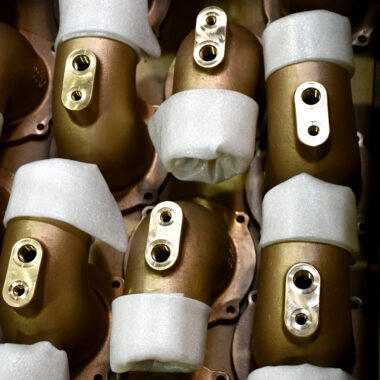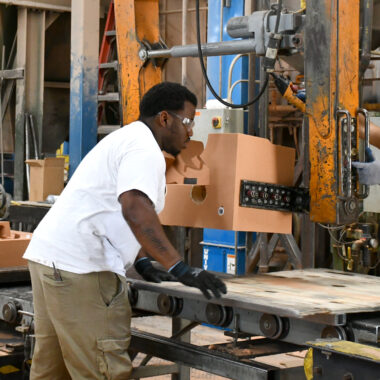The Top Methods for Light Weight Aluminum Casting That You Required to Know
In the world of aluminum spreading, accuracy and experience are vital. Understanding the nuances of different spreading strategies can considerably affect the high quality and performance of the end product. From the traditional sand casting technique to the complex financial investment spreading procedure, each strategy supplies unique advantages that deal with different project requirements. As we navigate with the top methods for aluminum casting, it ends up being apparent that grasping these techniques is important for accomplishing ideal results. Let's explore the complexities of these techniques and how they shape the world of light weight aluminum spreading.
Sand Spreading Strategy
The Sand Casting Method is an essential technique in aluminum spreading, commonly utilized for its cost-effectiveness and versatility in developing complex metal forms. This method includes developing a mold and mildew made of compressed sand into which molten light weight aluminum is poured, permitting it to solidify and take the form of the mold and mildew. One of the key benefits of sand casting is its capacity to produce intricate geometries with fairly reduced tooling expenses, making it an attractive choice for manufacturers aiming to produce one-of-a-kind elements.
In the sand spreading process, a pattern of the last part is pushed right into a fine sand combination included within a flask. As soon as the pattern is eliminated, a dental caries representing the last component's shape is left in the sand. Molten light weight aluminum is after that poured right into the cavity, taking and filling the area on the specific details of the pattern. After the light weight aluminum cools down and solidifies, the sand mold is escaped, exposing the freshly cast aluminum part. Sand spreading is commonly utilized in different sectors, including automobile, aerospace, and art shops, as a result of its ability to create both large and small metal elements with detailed designs.

Financial Investment Casting Process
An intricate approach employed in light weight aluminum casting is the Financial investment Casting Process, recognized for its capability to generate extremely detailed and intricate steel parts. Referred to as the lost-wax casting process, this strategy dates back thousands of years and continues to be a preferred choice in numerous industries due to its adaptability and precision.
The investment spreading process begins with the production of a wax pattern, which is coated with a ceramic shell to develop a mold and mildew. The wax is then thawed out, leaving a dental caries in the shape of the preferred component. Molten aluminum is poured into the ceramic mold and mildew, filling up the dental caries and taking on the detailed details of the original wax pattern.
This technique is preferred for its capacity to produce complicated forms with superb surface finish and dimensional accuracy. It is frequently made use of in the manufacturing of aerospace components, jewelry, and industrial machinery where complex layouts are called for. The financial investment casting process provides high repeatability and can create parts with very little machining called for, making it a cost-effective choice for numerous applications.
Long-term Mold Technique
Utilizing a various technique from the Financial investment Casting Refine, the Permanent Mold Technique in aluminum casting provides an unique technique for creating metal components. In this method, a reusable mold and mildew, typically made of steel or actors iron, is made use of to form the liquified aluminum. The mold is preheated to a specific temperature prior to the light weight aluminum is poured into it. The heat transfer from the liquified steel to the mold helps in solidifying the light weight aluminum promptly, minimizing the cooling time compared to sand casting.
One of the vital advantages of the Long-term Mold Approach is the enhanced surface area finish and dimensional precision of the spreadings produced. This approach is likewise known for its capacity to produce high-strength light weight aluminum elements with consistent top quality. Furthermore, the reusable nature of the mold and mildew makes it an affordable option for tool to high volume manufacturing runs.
Pass Away Casting Modern Technology
Utilizing sophisticated production processes, die casting modern technology provides a very efficient technique for generating intricate aluminum elements. This strategy includes infusing molten aluminum right into a steel mold and mildew, called a die, at high stress. The die is specifically made to shape the light weight aluminum into the wanted kind, resulting in high precision and superb surface area coating.
Pass away casting deals a number of benefits. It enables for the production of complicated forms with slim wall surfaces, limited resistances, and smooth surfaces, making it optimal for applications where aesthetics and precision are important. Furthermore, pass away spreading makes it possible for quick manufacturing rates, decreasing general manufacturing time and expenses.

Lost Foam Casting Technique
Pass away casting modern technology's efficiency and precision in producing aluminum elements pave the method for checking out the Lost Foam Casting Technique as a complementary manufacturing technique. Lost Foam Casting, also recognized as evaporative pattern casting, is a technique that utilizes foam patterns to develop detailed aluminum parts.
One of the key advantages of Lost Foam Casting is its ability to produce complex layouts with complex details that might be testing to achieve through traditional casting approaches. As sectors continue to require light-weight yet sturdy elements, Lost Foam Casting confirms to be an important method in the world of light weight aluminum spreading.
Final Thought
In verdict, comprehending the top strategies for light weight aluminum casting is essential for achieving top notch results in the production procedure. Sand casting, financial investment spreading, irreversible mold, pass away spreading, and lost foam casting are all effective techniques for producing aluminum get rid of different degrees of complexity. By grasping these methods, makers can ensure that their items meet the desired specifications and criteria for performance and sturdiness.
From the standard sand spreading approach to the detailed financial investment spreading process, each method offers unique benefits that cater a fantastic read to various job needs.The Sand Casting Strategy is a fundamental approach in light weight aluminum casting, widely utilized for its cost-effectiveness and flexibility in developing complex steel forms. Lost Foam Casting, likewise recognized as evaporative pattern casting, is a technique that straight from the source utilizes foam patterns to develop intricate aluminum parts. As industries proceed to require light-weight yet sturdy elements, Lost Foam Spreading verifies to be a useful technique in the realm of light weight aluminum casting.
Sand casting, investment spreading, permanent mold and mildew, pass away spreading, and shed foam casting are all efficient approaches for generating light weight aluminum components with different levels of intricacy.